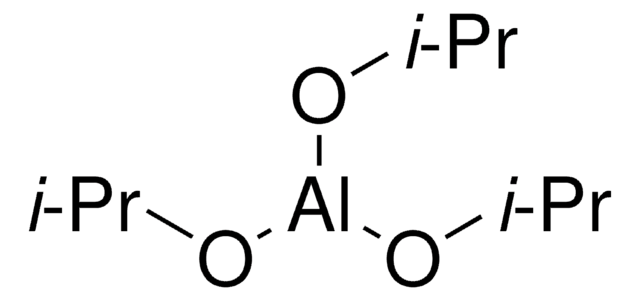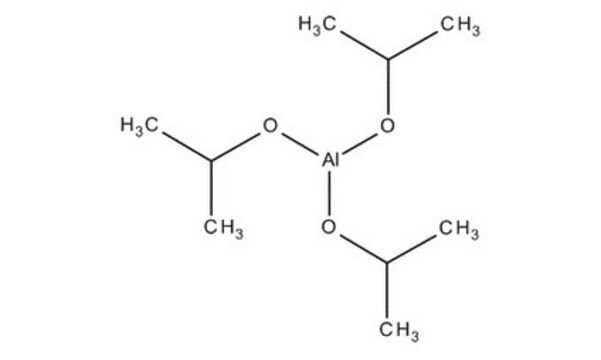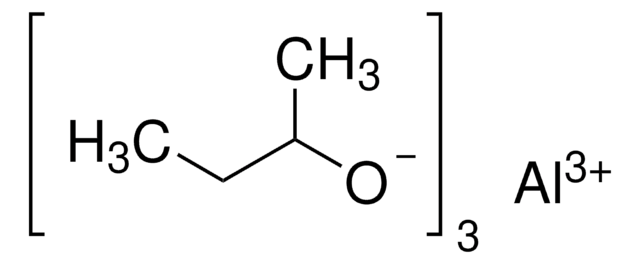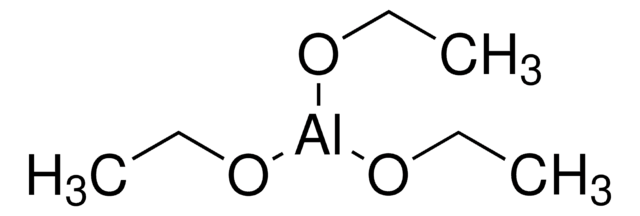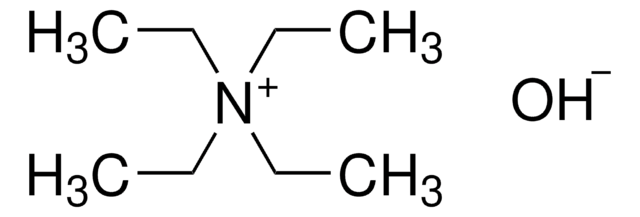229407
Aluminum isopropoxide
≥99.99% trace metals basis
Sinónimos:
AIP, Aluminum isopropylate, Aluminum triisopropoxide
About This Item
Productos recomendados
assay
≥99.99% trace metals basis
form
powder and chunks
solid
reaction suitability
core: aluminum
reagent type: catalyst
mp
128-133 °C (lit.)
density
1.035 g/mL at 25 °C (lit.)
SMILES string
CC(C)O[Al](OC(C)C)OC(C)C
InChI
1S/3C3H7O.Al/c3*1-3(2)4;/h3*3H,1-2H3;/q3*-1;+3
InChI key
SMZOGRDCAXLAAR-UHFFFAOYSA-N
¿Está buscando productos similares? Visita Guía de comparación de productos
General description
Application
- Sol-gel precursor to synthesize ZnAl2O4 powders for transparent ceramics.
- Precursor material for the fabrication of nanosized SAPO-34 zeolites with a 4-fold increase in catalytic lifetime and significantly increased selectivity.
- A starting material to prepare long-persistent luminescence materials for display devices and bioimaging.
- Coating material to fabricate electrodes for lithium-ion batteries to enhance cycling stability and performance.
- A catalyst for alkylation of resorcinol with camphene.
Elija entre una de las versiones más recientes:
¿Ya tiene este producto?
Encuentre la documentación para los productos que ha comprado recientemente en la Biblioteca de documentos.
Los clientes también vieron
Artículos
Nanostructured Materials Through Ultrasonic Spray Pyrolysis
Advanced Inorganic Materials for Solid State Lighting
Nanostructured Materials Through Ultrasonic Spray Pyrolysis
Nanomaterials are considered a route to the innovations required for large-scale implementation of renewable energy technologies in society to make our life sustainable.
Nuestro equipo de científicos tiene experiencia en todas las áreas de investigación: Ciencias de la vida, Ciencia de los materiales, Síntesis química, Cromatografía, Analítica y muchas otras.
Póngase en contacto con el Servicio técnico